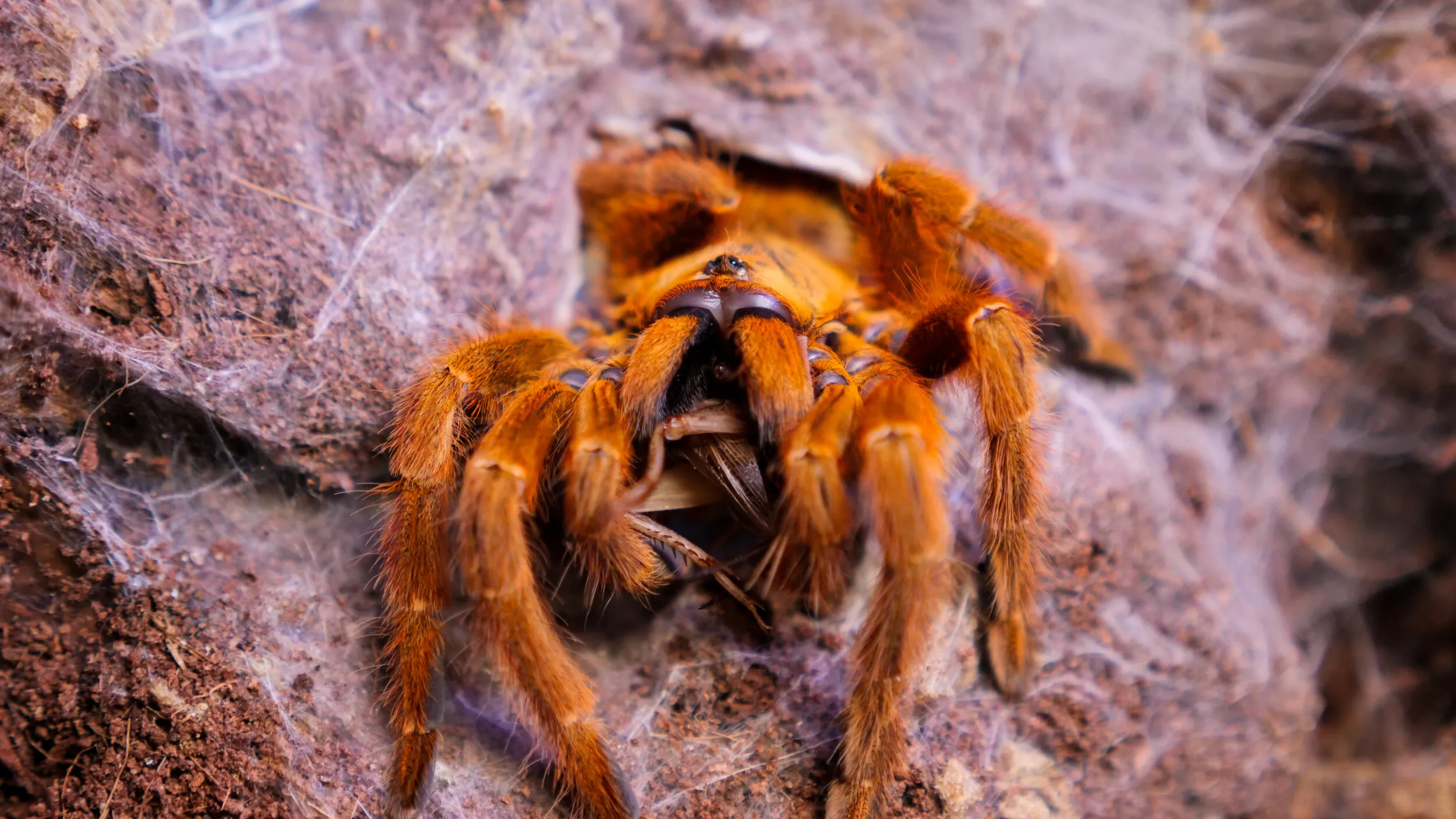Choosing Live Plants for Your Tarantula Habitat
Creating a thriving habitat for your tarantula goes beyond just providing a secure enclosure. Incorporating live plants not only enhances the aesthetic appeal of your pet’s home but also contributes significantly to its overall well-being. Live plants offer numerous benefits, from regulating humidity and providing naturalistic enrichment to improving the overall health of your tarantula. This guide will explore the top 5 live plant choices perfect for your tarantula habitat, helping you create an enriching environment that mimics their natural surroundings. Understanding the right plants for your tarantula enclosure is crucial for creating a balanced and healthy ecosystem. The choices you make will directly impact the health and happiness of your arachnid companion.
Why Use Live Plants in a Tarantula Enclosure
Integrating live plants into a tarantula enclosure is more than just a decorative choice; it is a vital element in ensuring the well-being of your pet. They create a complex microclimate that supports the tarantula’s needs, mimicking the natural environments where these creatures thrive. The presence of live plants contributes substantially to both the physical and psychological health of your tarantula. By understanding the benefits, you can make informed decisions about the types of plants you choose and how to care for them within your tarantula’s habitat. Proper integration leads to a thriving enclosure and a happier tarantula.
Benefits of Live Plants
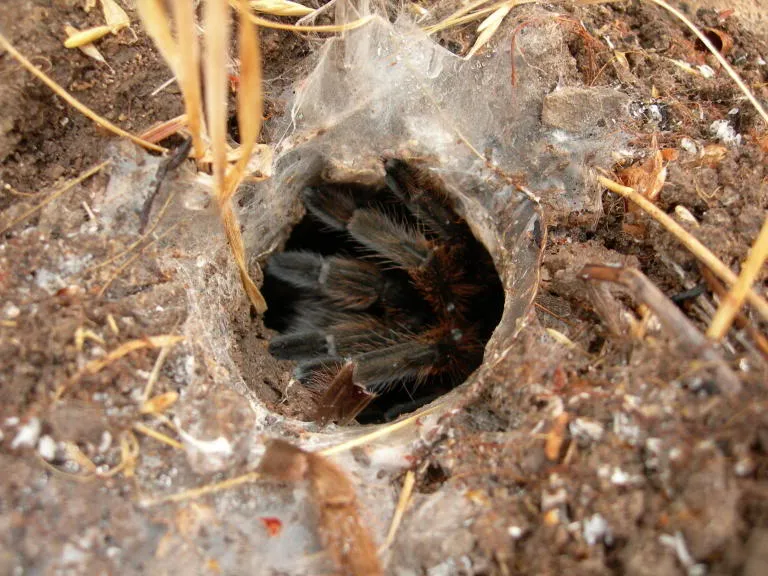
Live plants offer many benefits, including improving air quality and providing enrichment. Live plants help to naturally filter the air, reducing harmful toxins that may be present in the enclosure. They create a more balanced and healthy environment for your tarantula. Furthermore, plants offer enrichment opportunities. Tarantulas are naturally inclined to explore their environment, and plants create hiding places, climbing structures, and visual barriers, all of which stimulate natural behaviors. This contributes to their psychological well-being and reduces stress.
Creating a Natural Environment
Live plants help replicate the tarantula’s natural habitat, encouraging behaviors and reducing stress. They provide a more naturalistic setting that can help your tarantula feel secure and content. Mimicking the environment where your tarantula would naturally live is an essential part of good care. This can promote the tarantula’s natural behaviors, such as hunting and burrowing. Providing a natural environment contributes significantly to the overall health and well-being of your pet.
Improving Humidity Levels
One of the most critical benefits of using live plants in a tarantula enclosure is their ability to regulate humidity. Through transpiration, plants release moisture into the air, which helps to maintain the necessary humidity levels. This is essential for the tarantula’s health, as it aids in the molting process and prevents dehydration. By carefully selecting plants that thrive in high humidity, you can create a consistent and beneficial microclimate within the enclosure. This natural regulation is often more effective and safer than relying solely on artificial humidification methods. Therefore, the inclusion of live plants is vital for creating a healthy and thriving environment for your tarantula.
Top 5 Live Plant Choices for Tarantula Habitats
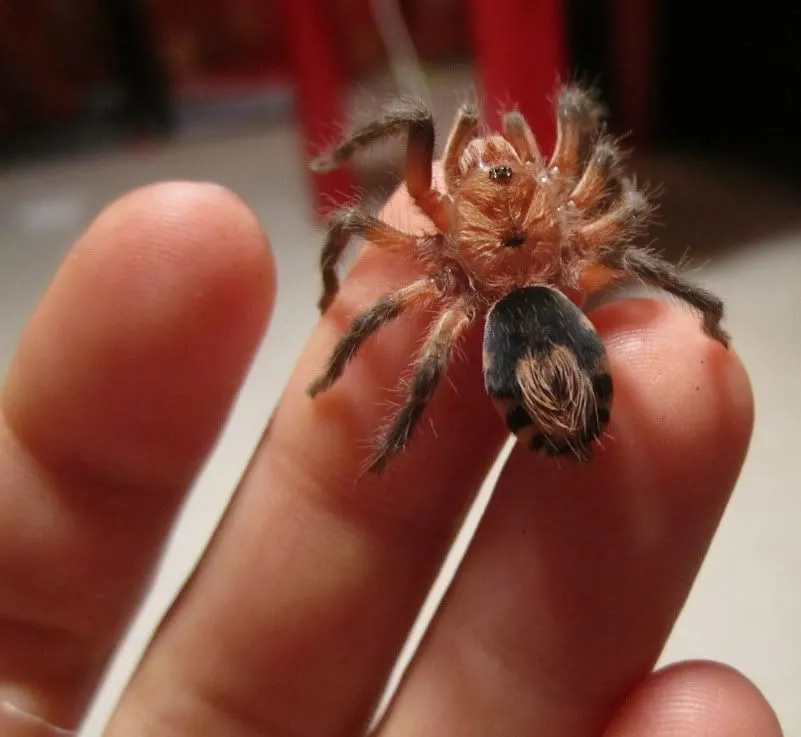
Selecting the right plants for your tarantula habitat is critical for creating a functional and beautiful enclosure. Consider factors such as the size of the plant, its care requirements, and its suitability for the specific species of tarantula you keep. The plants listed below are popular choices because they are relatively easy to care for, tolerate the high humidity often required for tarantulas, and pose little risk to your pet. Choosing the right plants will significantly enhance the overall environment, health, and well-being of your tarantula. Remember to research each plant to ensure it aligns with your tarantula’s needs.
Pothos
Pothos plants are a popular choice due to their hardiness and adaptability. They thrive in low light conditions, making them well-suited for terrariums where artificial lighting is often used. Their trailing vines can create excellent hiding spots and climbing structures for your tarantula. Pothos is known for its ease of care, needing only occasional watering. Their ability to tolerate a range of humidity levels also makes them a great choice for varied tarantula species. Choose different pothos varieties for added visual appeal in your tarantula’s habitat.
Care and Maintenance
Pothos plants require minimal maintenance. Water them when the top inch of soil is dry, and avoid overwatering. They prefer moderate to low light, so place them away from direct sunlight to prevent leaf burn. Pruning is typically unnecessary but can be done to control the plant’s size and shape. Regularly inspect for pests, although pothos are generally resistant to common terrarium pests. Ensuring your pothos plant receives proper care will help it thrive and provide lasting benefits for your tarantula.
Suitability for Different Tarantula Species

Pothos is suitable for many tarantula species. Its adaptability to different humidity levels makes it a good fit for both arboreal and terrestrial tarantulas. The trailing vines provide climbing opportunities for arboreal species, while terrestrial tarantulas can use them as cover. It is a safe choice because the plant is not toxic to tarantulas. However, always research your specific tarantula species to ensure the pothos variety and setup are appropriate for their needs and habitat preferences. This will help to create a beneficial enclosure that suits your pet’s specific requirements.
Snake Plant
Snake plants, known for their resilience and striking vertical foliage, are excellent choices for tarantula habitats. Their upright structure provides visual interest and can create a sense of security for the tarantula. Snake plants are very drought-tolerant, which means they require infrequent watering, a significant advantage for beginners. These plants also help purify the air, contributing to a healthier environment for your tarantula. They also come in different varieties, adding more visual aesthetics to your pet’s enclosure. Snake plants require minimal care, making them a low-maintenance option for your tarantula enclosure.
Light Requirements
Snake plants can thrive in low to moderate light conditions, making them ideal for terrariums. Avoid placing them in direct sunlight, which can scorch the leaves. If you use artificial lighting, position the plant so it receives indirect light. The key is to provide enough light for the plant to grow without causing damage. If you notice the leaves turning yellow, that may be a sign of too much light. Proper lighting will ensure the snake plant remains healthy and vibrant within your tarantula’s enclosure. Observing your plant’s response to light is essential for optimizing its growth.
Watering Schedule

Snake plants are highly drought-tolerant, so overwatering is a common mistake. Water only when the soil is completely dry. Allow the soil to dry out thoroughly between waterings to prevent root rot. When watering, ensure the soil is moistened evenly, but avoid letting the plant sit in standing water. Adjust your watering schedule depending on the humidity and temperature within the enclosure. Overwatering can lead to a decline in the plant’s health and potentially harm your tarantula. By following a proper watering schedule, you can keep your snake plant healthy for a long time.
Spider Plant
Spider plants are popular because of their ease of propagation and appealing look. They produce small plantlets, often called spiderettes, on long stems, which can create a dynamic look in the enclosure. Their arching leaves and air-purifying abilities make them a welcome addition to any terrarium. Spider plants are relatively easy to care for and can tolerate a wide range of conditions, making them suitable for various tarantula species. Their adaptability and visual appeal make spider plants a great choice for enhancing the natural environment within your tarantula’s enclosure.
Ease of Propagation
Spider plants are famous for their ease of propagation. The spiderettes can be easily removed from the parent plant and planted in soil to grow new plants. This makes it simple to expand your collection or share plants with other hobbyists. The plantlets root quickly and establish themselves with minimal effort. Propagating spider plants is a rewarding experience that lets you sustainably increase the number of plants in your collection. It is a fantastic way to fill your tarantula’s enclosure with more plants over time.
Pest Control
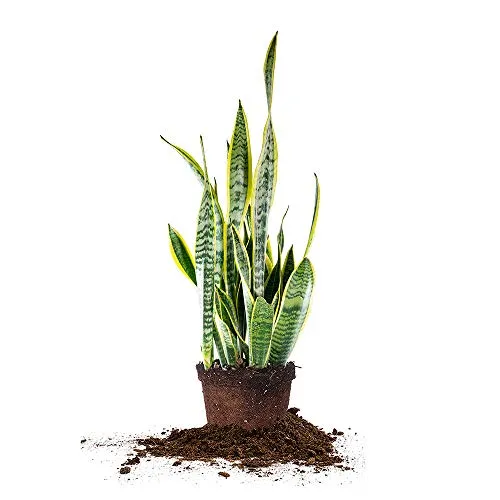
Pest control is important when using live plants. While spider plants are relatively pest-resistant, it is essential to monitor them for signs of infestation, such as spider mites. If you discover pests, treat the plant with an insecticidal soap or neem oil, ensuring it is safe for your tarantula. Always quarantine new plants before introducing them to your tarantula’s enclosure. Regular inspections and preventive measures will help keep your plants healthy and protect your tarantula. Maintaining a clean and pest-free environment is crucial for the well-being of your pet and the plants in their habitat.
Ficus
Ficus plants, such as the weeping fig (Ficus benjamina), can add a touch of elegance to your tarantula’s enclosure, offering more significant leaf cover for the tarantula. They provide shelter and can create a more dynamic and engaging environment. Their dense foliage allows for climbing and hiding, which can satisfy your tarantula’s need for security. While ficus can be a beautiful addition, it is crucial to choose the correct variety and provide the right care. This can make your tarantula feel secure and encourage natural behaviors, contributing to their overall health and happiness.
Humidity and Temperature Preferences
Ficus plants thrive in high humidity and moderate temperatures, making them a good match for many tarantula species. Maintain humidity levels between 60% and 80% and temperatures between 70°F and 85°F. Provide adequate ventilation to prevent fungal issues. Regular misting can help to keep the humidity level balanced. Monitoring both humidity and temperature is key to keeping your ficus healthy and supporting your tarantula’s health. Consistent conditions will allow your ficus to flourish and create a perfect environment for your tarantula.
Pruning and Shaping
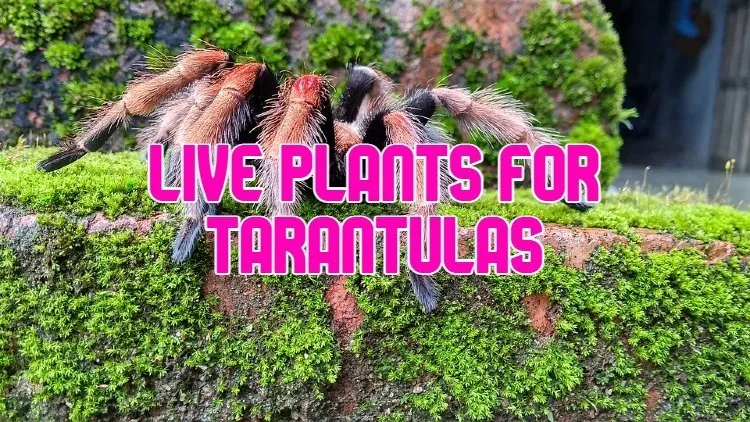
Pruning is important to control the size and shape of ficus plants within the enclosure. Regularly trim the branches to maintain the desired size and encourage a bushier growth habit. Pruning also helps improve air circulation and prevents overcrowding. Always use clean, sharp pruning shears to avoid introducing diseases. Removing dead or yellowing leaves will also keep the plant healthy. Strategic pruning is a critical aspect of ficus care, ensuring the plant remains attractive and continues to provide benefits to the tarantula habitat. Proper pruning and care will improve both the appearance and function of the ficus.
Bromeliads
Bromeliads, with their exotic appearance and diverse forms, are well-suited for creating visually appealing habitats. Many bromeliads, such as the Neoregelia, are epiphytes, meaning they can grow on other plants or structures, adding a unique vertical dimension to the enclosure. Their vibrant colors and interesting textures make them a captivating feature in any tarantula terrarium. Many bromeliads are relatively easy to care for and require infrequent watering, which makes them ideal for tarantula habitats. Their versatility makes them a great choice for various species.
Varieties and Colors
Bromeliads come in a wide variety of species and colors, offering many design options. The Neoregelia species is popular for its vibrant colors and easy care. Tillandsias, or air plants, can also be incorporated, adding visual interest and requiring little maintenance. When choosing bromeliads, consider the size and growth habits to ensure they are appropriate for your tarantula’s enclosure. Mixing the different species can create a stimulating and beautiful environment. Choosing the right bromeliad for the enclosure is essential.
Placement and Decoration
Proper placement and decoration with bromeliads can enhance the enclosure’s aesthetics. Attach epiphytic bromeliads to driftwood or cork bark to create a more natural look. Position plants to provide hiding spots and climbing opportunities for your tarantula. Ensure the plants are securely placed to prevent them from falling. Decorate with other natural elements, such as rocks and moss, to create a cohesive and attractive habitat. Proper placement will boost the beauty and functionality of the habitat. Consider the arrangement and how it benefits your pet.
Setting Up and Maintaining Your Planted Tarantula Habitat
Setting up and maintaining a planted tarantula habitat involves more than simply adding plants to the enclosure. The substrate, lighting, and watering practices are essential components of this type of habitat. They significantly impact the health and the environment. Proper planning and ongoing care will allow you to enjoy a beautiful, functional habitat. The success of your planted tarantula habitat depends on your ongoing care and maintenance. Proper setup ensures that the plants thrive, and your tarantula remains healthy and content.
Substrate and Drainage
The substrate is the foundation of your planted tarantula habitat. Use a substrate mix that allows for drainage while retaining moisture. A blend of sphagnum moss, coco coir, and organic potting soil is often recommended. This combination helps with drainage, aeration, and nutrient retention. Adding a drainage layer of gravel or clay pebbles at the bottom of the enclosure prevents waterlogging and root rot. Proper drainage and substrate are critical for the long-term health and success of your plants and your tarantula. The proper substrate will help to maintain the humidity level required by your tarantula.
Lighting and Heating
Proper lighting is crucial for the growth of your plants. Use fluorescent or LED grow lights to provide the necessary spectrum and intensity of light. Monitor the light levels and adjust them as needed to suit the needs of your plants. Be sure to provide proper heating to regulate the enclosure’s temperature. Use a heat mat or ceramic heat emitter, but always ensure the temperature is suitable for your tarantula species. Proper lighting and heating will help with the health and beauty of your plants and improve your tarantula’s well-being.
Watering and Humidity Control
Watering and humidity control are critical elements for a planted tarantula habitat. Water your plants when the top inch of the soil is dry, but avoid overwatering. Monitor the humidity levels with a hygrometer and adjust accordingly. Misting the enclosure can help maintain humidity, but do it sparingly to avoid waterlogged soil. Make sure that the enclosure has proper ventilation. The right balance of watering and humidity is key to the health of both your plants and tarantula. Proper humidity control is essential to your tarantula’s health.
Monitoring Plant Health
Regularly check your plants for signs of pests, diseases, or nutrient deficiencies. Inspect the leaves for discoloration, spots, or unusual textures. Address any issues promptly by using appropriate treatments, such as insecticidal soap or removing affected leaves. Regularly inspect for pests and diseases and take action if you find problems. Monitoring plant health will help you maintain a thriving and healthy ecosystem for your tarantula. Regular observation ensures that any issues can be addressed early and ensures the plants remain healthy and appealing.
Conclusion
Incorporating live plants into your tarantula habitat is a rewarding endeavor that enhances your pet’s environment and well-being. By choosing the right plants, such as pothos, snake plants, spider plants, ficus, and bromeliads, you can create a lush, naturalistic habitat that mimics the tarantula’s natural environment. Proper setup and maintenance, including appropriate substrate, lighting, and humidity control, are vital to the plants’ health and your tarantula’s comfort. With careful planning and consistent care, your planted tarantula habitat will flourish, providing a beautiful and enriching home for your arachnid companion. The top 5 live plants will help to elevate your tarantula’s habitat.
